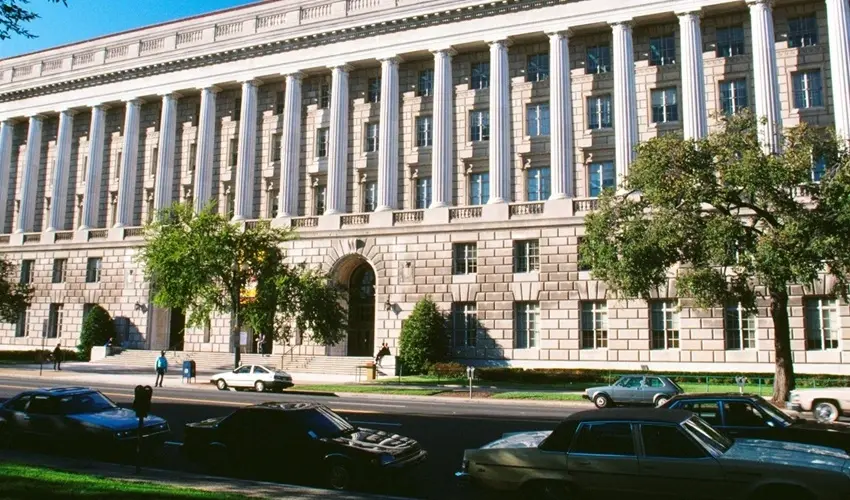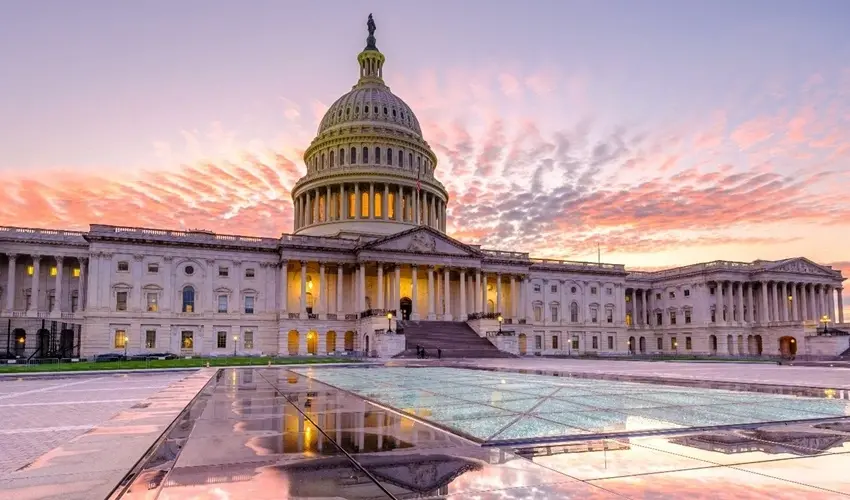Q2 2025 Fiduciary Hot Topics

Welcome to the Q2 2025 Fiduciary Hot Topics where we discuss important ERISA related topics that you should be discussing with your plan sponsors. In addition to the full document (available here), you can watch our video outlining what each section means for plans.
IRS Proposes Regulations on Mandatory Automatic Enrollment
The IRS issued Proposed Treasury Regulation 1.414A-1 on January 14, 2025, in support of SECURE Act 2.0’s mandate to include eligible automatic contribution arrangements (EACAs) in newly established 401(k) and 403(b) plans, effective for plan years after December 31, 2024.
There is a 60-day public comment period until March 17, 2025, on the proposed rules, followed by a public hearing scheduled for April 8, 2025. The rules will not apply until six months after official publication of the final rules. For earlier plan years, a plan would be treated as having complied with IRC. §414A if the plan complies with a reasonable, good faith interpretation of the statutory provision.
Automatic Enrollment Mandate
The proposed regulations mandate that new plans must automatically enroll eligible employees at a minimum contribution rate of 3%, increasing by 1% annually until reaching at least 10% but not exceeding 15%. Employees must be able to opt out or modify their contribution percentage. Additionally, plans must allow withdrawals without penalties within 90 days of automatic enrollment. The IRS takes the position in the proposed regulations that the automatic enrollment requirements apply to all eligible employees, including long-term, part-time employees, without exception.
General Rule for Mergers
If a 401(k) or 403(b) plan established before December 29, 2022 (i.e., a pre-enactment plan), merges with a plan established on or after that date, the merged plan generally will not retain the pre-enactment status unless specific conditions are met.
Multiple Employer Plans (MEPs)
For MEPs, the rules apply on an employer-by-employer basis. If an employer adopts a multiple employer plan after December 29, 2022, the plan will not be treated as a pre-enactment plan with respect to that employer. However, this does not affect other employers in the plan who adopted it before that date.
Plan Spin-Offs
If a portion of a pre-enactment plan is spun off to form a new plan, the new plan will retain the pre-enactment status if the original plan was not a MEP or if it was a MEP treated as a pre-enactment plan with respect to the employer maintaining the spun-off plan.
The regulations further clarify that amendments to existing plans, including changes in service providers or eligibility expansions, do not alter their pre-enactment status unless they involve the adoption of an MEP or a merger with a non-pre-enactment plan. This ensures consistency and protects employers who make administrative updates without intending to change their compliance obligations.
Eliminating Unnecessary Plan Notices
The proposed regulations for the auto enroll mandate also include specific provisions for unenrolled participants in retirement plans. An unenrolled participant is defined as an employee who is eligible to participate in a DC plan, has received the necessary initial eligibility notices, but is not currently participating in the plan.For unenrolled participants, the regulations stipulate that no additional disclosures, notices, or plan documents are required to be furnished, provided that these participants receive an annual reminder notice.
PLESAs
The proposed regulations for the auto enroll mandate also address the integration of PLESAs with retirement plans. PLESAs are a feature introduced by the SECURE 2.0 Act, effective for plan years beginning after December 31, 2023, allowing participants to save for emergencies within their retirement plans.
Consolidated Notices
The proposed regulations for the auto enroll mandate allow for the consolidation of various required plan notices. This consolidation aims to streamline communication and reduce redundancy, making it easier for plan sponsors to comply with notice requirements while ensuring that participants receive all necessary information.
Permitted Consolidation: The EACA notice required under Treas. Reg. §1.414(w)–1(b)(3) can be combined with other required notices such as for:
- QDIAs
- Automatic contribution arrangements
- PLESAs
- Safe harbor status
- A qualified automatic contribution arrangement (QACA)
Requirements for Combined Notices:
- The combined notice must include all required content for each individual notice.
- The issues addressed in the combined notice must be clearly identified.
- The combined notice must be furnished at the time and with the frequency required for each individual notice.
- The notice must be presented in a manner that is reasonably calculated to be understood by the average plan participant.
- The primary information required for each notice must not be obscured or fail to be highlighted.
By consolidating notices, plan sponsors can improve the efficiency of their communication processes while ensuring that participants are well-informed about their rights and obligations under the plan.
Plan Sponsors Can Self-Correct Some Errors Under the VFCP
The DOL released new rules that add a self-correction process to the VFCP, effective March 17, 2025. Specifically, the new procedures permit a plan sponsor to self-correct two of the most common plan errors related to 1) delinquent participant contributions and loan repayments, and 2) eligible inadvertent participant loan failures.
Delinquent Contribution Correction
The DOL considers participant contributions and loan repayments as delinquent when employers retain these payments without contribution to the plan beyond the time permitted by the DOL, in general, as soon as they can be segregated from the employer’s general assets. Under the new program, plan sponsors can self-correct this error if the following occurs:
If a plan sponsor corrects under the self-correction program, it must notify the EBSA of the self-correction by submitting a SCC Notice with the required information through the EBSA’s website. The plan sponsor must also keep all documents relating to the correction, including the SCC Retention Record Checklist and a penalty of perjury statement, in the plan’s records. Unlike a correction under the VFCP, a plan sponsor will not receive a “no action” letter. Instead, the plan sponsor will simply receive an email acknowledgment. The late contributions will still need to be disclosed on Form 5500.
Inadvertent Plan Loan Failure
Following the directive set forth in SECURE Act 2.0, the self-correction process also permits the correction for inadvertent plan loan failures that are eligible for correction under the IRS’ Employee Plans Compliance Resolution System (EPCRS).
Like the correction for delinquent contributions, plan sponsors must notify EBSA of the self-correction by submitting the SCC Notice and complete and retain the relevant documents and penalty of perjury statement. However, the SCC Retention Record Checklist is not required for the correction of this failure.
DOL Makes Inflation Adjustments to Plan Penalty Amounts
The Department of Labor (DOL) has issued final regulations that adjust for inflation the agency's 2025 civil money penalties. These penalty amounts, which help ensure that retirement plans meet their disclosure, reporting, and recordkeeping obligations, become effective for any penalties assessed after January 15, 2025.
DOL Temporary “Non-Enforcement Policy” for Small-Balance Transfers to State Unclaimed Property Funds
On January 14, 2024, the Department of Labor (DOL) published a Field Assistance Bulletin (FAB) 2025-01 announcing a “non-enforcement” policy with respect to the transfer of small defined contribution (DC) plan balances ($1,000 or less) belonging to missing participants to a state unclaimed property fund.
Background
In 2021, the DOL published Field Assistance Bulletin 2021-01and best practices guidance related to missing participants. Plan sponsors, on occasion, must deal with missing plan participants and beneficiaries, and what to do with their plan balances. Current DOL regulations provide a rollover to an IRA as a fiduciary safe harbor for distributions over $1,000 from terminated or abandoned DC plans for missing participants (and those who do not otherwise affirmatively elect distributions). Additionally, under FAB 2021-01, the DOL will not pursue ERISA violations against plan fiduciaries of terminating DC plans if they transfer the plan balance of a missing or nonresponsive participant or beneficiary to the Pension Benefit Guaranty Corporation’s (PBGC’s) Defined Contribution Missing Participants Program rather than to an IRA, certain bank accounts, or to a state unclaimed property fund. For amounts of $1,000 or less, FAB 2025-09 addresses plan transfers to a state unclaimed property fund.
FAB 2025-01
For transfers of small benefits of $1,000 or less to a state unclaimed property fund, the DOL will not pursue violations under ERISA provided a plan sponsor follows the guidelines of FAB 2025-01.
To take advantage of FAB 2025-01 the plan fiduciary must
- Determine that transfer to a state unclaimed property fund is prudent.
- Have implemented a prudent program to find missing participants consistent with DOL’s Best Practices.
- Transfer the missing individual’s balance to the state fund based on their last known address.
- Ensure the plan’s SPD explains the transfer program and possibility of this sort of transfer, and provides a plan contact for further information.
- Determine the state fund qualifies as an “eligible state fund.”
Eligible State Fund
To be an eligible state fund, the fund must meet the nine criteria detailed below. A plan fiduciary may rely on a representation by a State Treasurer that the state operates an unclaimed property fund that meets all of the following conditions.
To be an eligible state fund, the fund must
- Act as the custodian of the funds of affected participants, their beneficiaries, and their heirs and allow for claims for unclaimed property in perpetuity.
- Not charge any fees against (or otherwise reduce) the transferred amount.
- Maintain at no charge a searchable website showing participant and plan identification information and that permits an electronic claims process.
- Publicly provide the ability to make inquiries by physical mail, electronic mail and telephone.
- Participate in the National Association of Unclaimed Property Administrators MissingMoney.com website or similar website operated under the auspices of the National Association of State Treasurers, Inc.
- Provide streamlined processing for small claims.
- Diligently search, annually, for an updated address for amounts over $50, and, when an updated address is obtained, notify the owner.
- Permit a plan to pre-pay a re-appearing participant directly and then get reimbursement from the state fund.
- Participate in the States’ Unclaimed Property Clearing House of the National Association of State Treasurers, Inc.
Takeaways for sponsors
From a plan governance perspective, plan sponsors should have a documented policy in place they follow that addresses missing participants and their plan balances that aligns with the DOL’s best practices and FABs on the subject. Regarding FAB 2025-01, to take advantage of this non-enforcement policy, the plan sponsor (or acting fiduciary) must implement a missing participant program consistent with DOL’s Best Practices for Pension Plans.
IRS Publishes Proposed Regulations on SECURE 2.0 Catch-Up Contribution Rules
On January 13, 2025, the IRS published proposed regulations on two SECURE Act 2.0 changes to 401(k) catch-up contribution rules: 1) increasing the catch-up contribution limit for taxpayers aged 60, 61, 62, or 63 and 2) requiring Roth treatment of catch-up contributions made by taxpayers who, for the preceding calendar year, receive more than $145,000 in wages from the employer sponsoring the plan.
Proposed regulations
The IRS’s proposal addresses certain issues with respect to these two changes.
Age 60-63 Super catch-up and universal availability requirement: The 401(k) and Tax Code nondiscrimination rules generally provide that a plan that offers catch-up contributions must offer them to all catch-up eligible participants in the same dollar amount (the “universal availability” requirement). The proposal would provide an exception to this rule for the increased catch-up amount available to participants aged 60-63.
These changes to the catch-up contribution rules would generally be applicable with respect to contributions in taxable years beginning more than six months after the date that final regulations are issued. A public hearing has been scheduled for April 7, 2025. Comments are due 60 days after the proposal is published in the Federal Register.
Trump Administration to Scrutinize Regulations and Regulatory Process
Three successive pronouncements from the Trump administration demonstrate its drive to reign in unnecessary regulations, including those that affect retirement plans. First, on January 20, 2025, a memorandum from President Trump directed a regulatory freeze (for 60 days), halting the implementation of any new or pending regulations.
Second, on January 31, 2025, President Trump issued an executive order launching a “Massive 10-to-1 Deregulation Initiative” that directs federal agencies to conduct comprehensive reviews of their existing regulations, with the goal of eliminating or revising rules that are deemed unnecessary, redundant, or overly burdensome. For every new regulation proposed, at least 10 outdated or inefficient rules must be removed or reformed. The accompanying fact sheet outlines detailed procedures for implementation.
Third, an executive order fact sheet, “End Federal Overreach in Regulation and Enforcement,” issued February 19, 2025, outlines a sweeping initiative to rein in regulatory activities by requiring agency leaders to conduct comprehensive reviews of all rules under their jurisdiction. It mandates that agency heads, in close coordination with their DOGE team leaders and the Office of Management and Budget (OMB), scrutinize each regulation for its legal basis and consistency with the current administration’s policy. Agencies must assess whether their current regulations exceed the statutory authority granted by Congress and determine if any rules conflict with constitutional principles. To provide structure and clarity in this overhaul, the fact sheet indicates that the administration will develop a “Unified Agenda.” This agenda will serve as a centralized roadmap to catalog and target regulations for repeal or modification.
Bipartisan Bill Would Allow CITs in 403(b) Plans
On February 5, 2025, Rep. Frank Lucas (R-OK-3) re-introduced H.R. 1013 to the House of Representatives. The House Committee on Financial Services is now reviewing the bill. The provisions collectively work to modernize the use of CITs in retirement plans by increasing flexibility for investment choices, clarifying fiduciary responsibilities, and enhancing transparency and oversight.
To view the full Fiduciary Hot Topics document, click here.
This material was created to provide accurate and reliable information on the subjects covered but should not be regarded as a complete analysis of these subjects. It is not intended to provide specific legal, tax or other professional advice. The services of an appropriate professional should be sought regarding your individual situation.
________________________________________
Looking for more information?
Contact the RPAG Support Team at support@rpag.com to learn more about RPAG and get help with our platform, suite of services, next-gen technology, or anything else!



